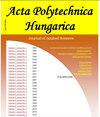The Chemical Composition of Post-Consumer Aluminium Scrap – A Challenge in Aluminium Recycling
IF 1.8
4区 工程技术
Q2 ENGINEERING, MULTIDISCIPLINARY
引用次数: 0
Abstract
: Aluminium is one of the most recyclable materials, as it can be recycled over and over again, and is one of few materials that keeps its properties after recycling. It can be re-melted and used again and again in new products, making it an environmentally friendly metal and a sustainable material. This makes aluminium an excellent material to meet the needs and challenges of different products. Also, aluminium recycling offers advantages in terms of environmental and economic benefits. Therefore, more aluminium must be collected, sorted, and returned into the economy as new products. Aluminium recycling is the process by which various scrap aluminium can reuse in products after its initial production and involves simply re-melting these scraps. This work provides an overview of the basic aluminium recycling process, using postconsumer scrap in the melting process in few laboratory experiments. Typically, postconsumer aluminium scrap is a mixture of alloys and sometimes even a mixture of metals, the main sources for aluminium scrap being the packaging, technology, construction, and the transport industry. In our experiments, different aluminium scrap sources were considered: mixed packaging aluminium scrap and used beverage can scrap, aluminium from electric cables and aluminium from collected castings. Having in view that the chemical composition is the main challenge in aluminium recycling, mass balance of main aluminium alloying elements is performed. This research provides an overview of the aluminium recycling process, from the scrap upgrading to the melting process.消费后铝废料的化学成分——铝回收的挑战
本文章由计算机程序翻译,如有差异,请以英文原文为准。
求助全文
约1分钟内获得全文
求助全文
来源期刊

Acta Polytechnica Hungarica
ENGINEERING, MULTIDISCIPLINARY-
CiteScore
5.20
自引率
17.60%
发文量
65
审稿时长
6-12 weeks
 求助内容:
求助内容: 应助结果提醒方式:
应助结果提醒方式:


